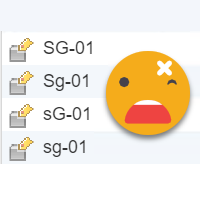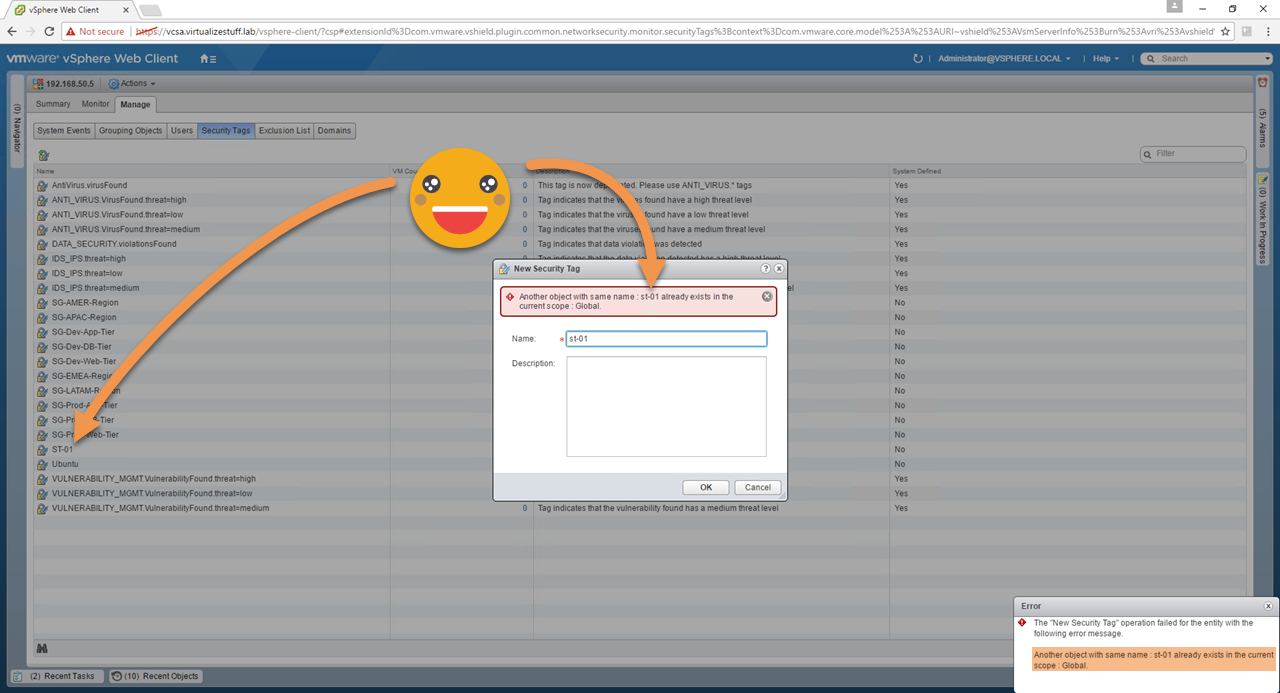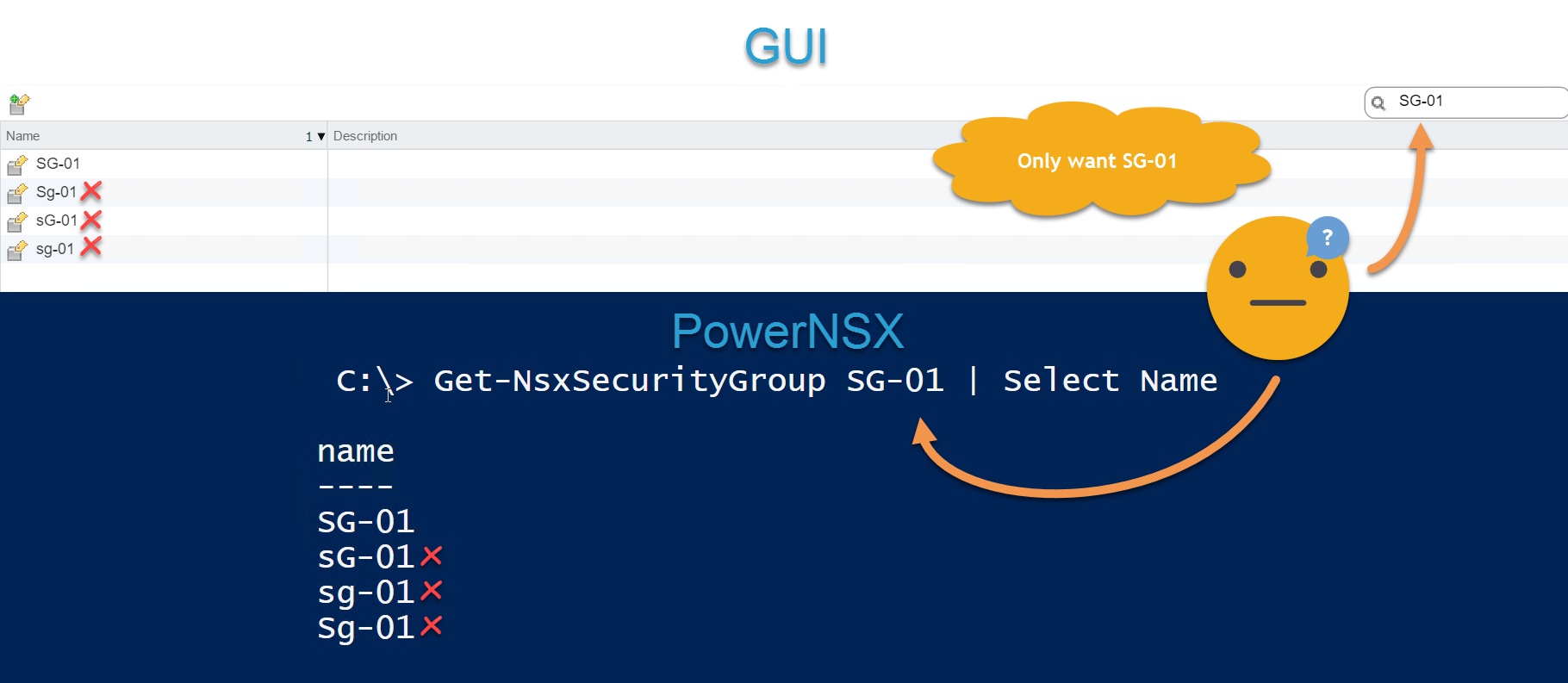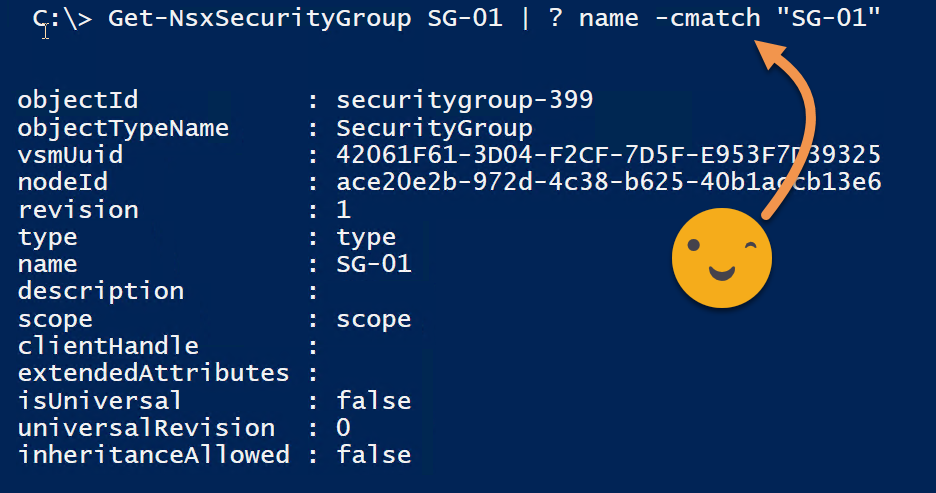Why NSX Name Fields Should Be Case-Insensitive
 Dave Davis
Dave Davis
Creating Security Groups
The example below is why NSX name fields should be case-insensitive. When creating security groups with the names: “SG-01”, “Sg-01”, “sG-01”, and “sg-01” one might think this won’t be allowed as they’re the same name. Actually, NSX allows this due to the fact that the name field is case-sensitive resulting in four security groups created as shown in Figure-1:

Figure-1
Again, the above example shows why NSX name fields should be case-insensitive. This would prevent such behavior, for example, security group “SG-01” already exists and when attempting to create another security group with the name “sg-01” would fail with a message similar to “Another object with the same name already exists in the current scope: Global”.
This issue also occurs in the following objects:
Security Groups
Security Policies
Custom Services
IP Sets
MAC Sets
Service Groups
IP Pools
Logical Switches
Creating NSX Edges
Surprisingly, Security Tags prevents the above problem, as shown in Figure-2:

Figure-2
Granted, this issue “could” be resolved with standardized naming schemes, however, simply forgetting to capitalize or not capitalize a letter could accidentally create an unintended object. When attempting to filter for “SG-01” in the GUI or in PowerNSX all four security groups are returned, as seen in Figure-3 which is not what the Emoji wants.
Luckily with PowerNSX, we can leverage PowerShell’s -cmatch comparison operator to help narrow down our selection as shown in Figure-4. That’s going to wrap up this post.

Figure-3

Figure-4
Subscribe to my newsletter
Read articles from Dave Davis directly inside your inbox. Subscribe to the newsletter, and don't miss out.
Written by
